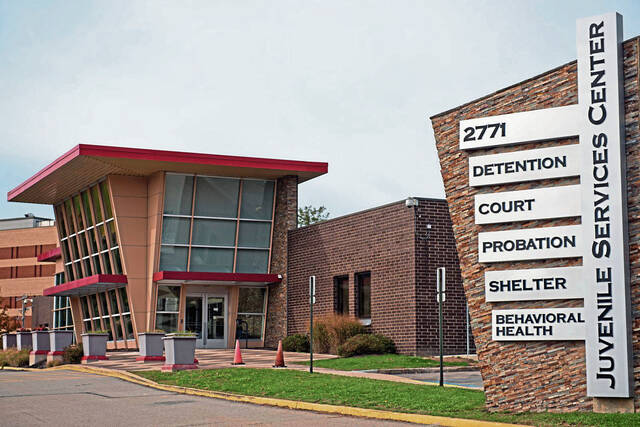Editorial: Adult crimes and juvenile defendants pose unique challenges
In Allegheny and Westmoreland counties, significant charges have been pressed against kids who can’t even drive yet.
A 14-year-old already on probation is charged in a fatal shooting in Carrick. A 16-year-old is charged with providing the gun to a 15-year-old for a planned robbery; the 15-year-old was subsequently shot and killed. Two teens — one a minor — are charged in the 2022 shooting at a Brighton Heights funeral. Seven individuals are charged in a New Kensington shooting that ended in the death of Jason Raiford, 39, in July 2022. Three are adults — the oldest is 19. The other four are 14 to 16.
These are just a few of the cases involving teenagers, despite U.S. Department of Justice data that show violent crime among minors is down precipitously since peaking in 1994. Out of 424,300 arrests of minors in 2020, only 8% were for violent crimes.
Still, the numbers aren’t easily dismissed. Of all the murders in 2020, 7% were attributed to minors. For aggravated assaults, it was 5%. For robberies, it was 18%.
So what do we do with kids accused of violent crimes? It’s an issue that can strain resources and test rules. It isn’t simply that Allegheny County’s Shuman Juvenile Detention Center was closed in 2021 when the state revoked its license after years of problems. Westmoreland County has its own Regional Youth Services Center. There are concerns about mixing kids with adult charges into that population for security’s sake.
However, minors accused of adult crimes can’t be put in with adult offenders, either. That’s federal law. Westmoreland’s prison can’t separate them, so they have contracted with Allegheny, which could.
Capacity won’t allow that now, forcing Westmoreland to find an alternative for the up to eight minors now affected. That means contracting with other facilities farther away. Lehigh County, about five hours away, is one option.
This does solve the problem of proper housing. It does not, however, accommodate the needs of a defense, and that has to be considered. These youths are awaiting trial and have a legally required presumption of innocence.
That also prompts questions about how it affects other aspects of a county’s budget. How many of these minors are receiving counsel from the public defender’s office or are being represented by outside counsel at public expense? Does a five-hour drive for a meeting with a client make sense? Does the same drive with a restrained inmate sound safe? Is an online meeting sufficient, or does it set up an ineffective counsel appeal down the road?
While the crime trends may be down over the decades, the number of serious cases in recent years suggests counties — and the state — should look at possible solutions to a problem that isn’t aging well.
Remove the ads from your TribLIVE reading experience but still support the journalists who create the content with TribLIVE Ad-Free.

